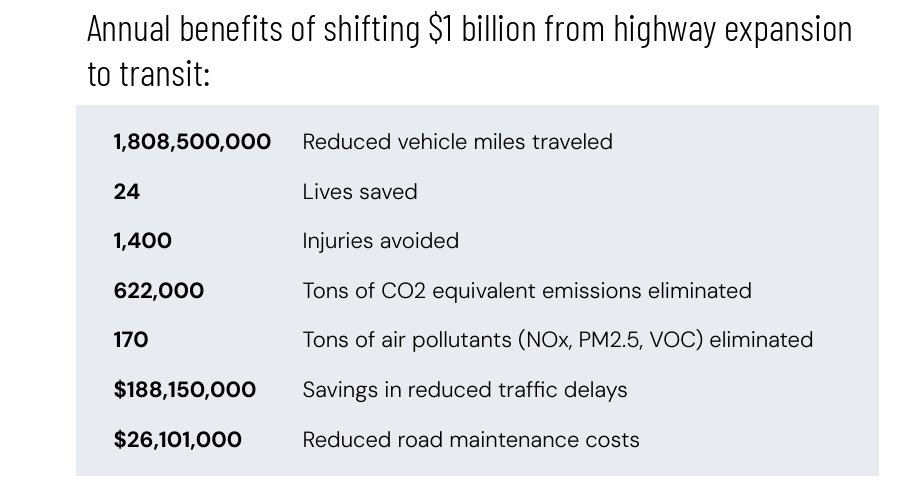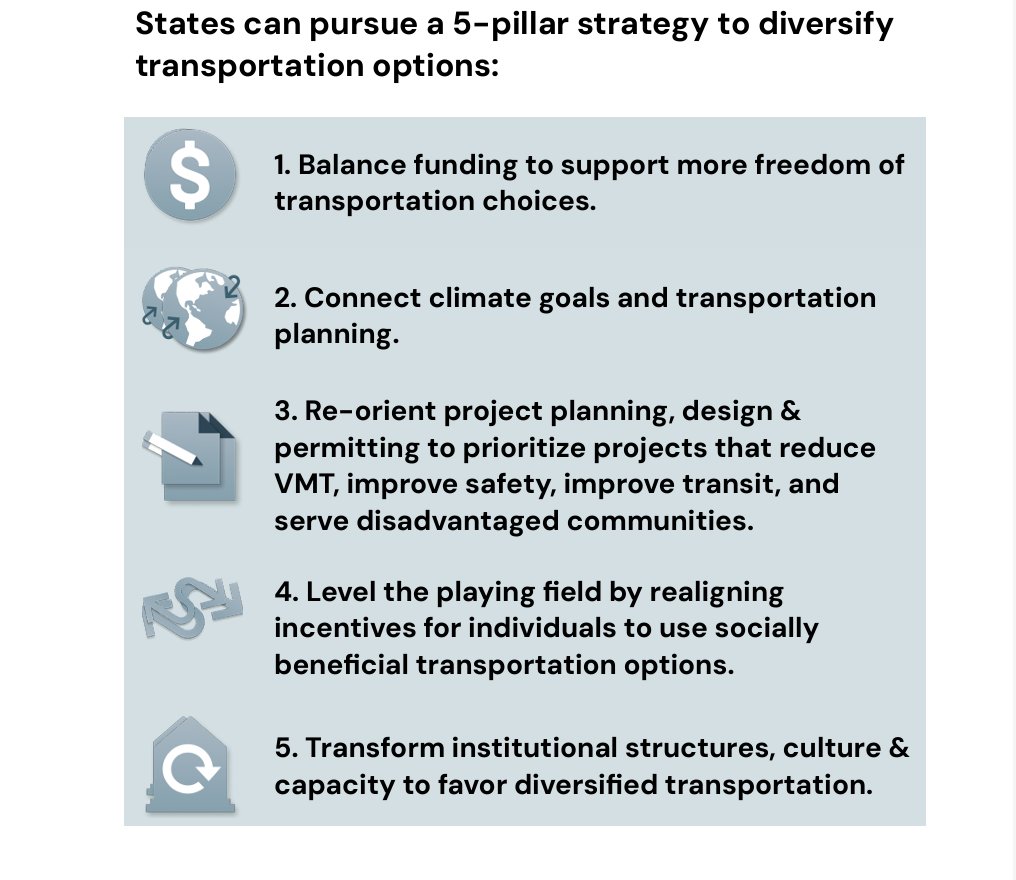Climate and Community Institute has released an exciting report, “Letting People Move” authored by Kira McDonald, Emmett Hopkins, and Narayan Gopinathan. This report focuses on measuring the real cost of highways and making policy recommendations for Congress, State Legislatures, and the Department of Transportation.
Read the full report that details why and how we need to transform the transportation system: Letting People Move: A Transportation and Policy Agenda to Address the Cost of Living and Climate Crises

For transit organizers and advocates, highlights how shifting from highway spending to investments in public transportation is beneficial. Effective use of infographics makes the arguments accessible and easy to use.

You can download the full report, as well as various component pieces:
- full report
- modeling results & methodology
- policy table
- separate policy agendas for Congress, State DOTs, and State Legislatures.
CCI wants to make the work useful to the on-the-ground campaigns that many of you are part of. Let them know if it would be helpful to have:
- modeling data specific to particular metro areas.
- a presentation to your group
- a subset of materials in a different format.
Every additional $1 billion approved for highways pushes communities farther from economic prosperity and social welfare, locks in additional VMT and carbon emissions, and makes it harder for transit to reach its potential to bring down the cost of living for millions of households. This report is both an urgent call and a comprehensive playbook for shifting transportation funding from highways to transit and human-scale streets.
Read the full report that details why and how we need to transform the transportation system: Letting People Move: A Transportation and Policy Agenda to Address the Cost of Living and Climate Crises
Key findings include:
- Decisions about whether to invest future transportation dollars in highways vs transit have huge implications. CCI modeling finds that every $1 billion shifted from highway expansion to transit saves at least $1.7 billion in social and environmental costs;
- States have the ability within current policy frameworks to shift much more funding away from highways and toward transit, but on the whole they are not doing it.
- There is a menu of effective policy options that can help advocates and allied policymakers make headway immediately at every level of government.
Takeaway stats:
- Every one billion dollars shifted from highway widening to new urban rail transit is projected to save $1.7 billion in externalized social or environmental costs; increase land values by $600 million; and reduce vehicle miles traveled (VMT) by almost 2 billion annually.
- Every one billion dollars shifted from highway widening to new urban rail transit induces nearly eight-thousand additional acres of urban sprawl. 8,000 acres is equivalent to ten Manhattan Central Parks. From a climate perspective, 8,000 acres of forest sequesters about 9,200 tons of CO2e/year, and contributes to a more stable climate through other processes as well.
- An ambitious program of shifting the entire NHPP five-year apportionment ($148 billion) and half of the STBG apportionment ($36 billion) to transit could reduce future driving by up to 368 billion VMT (equivalent to roughly 10 percent of today’s total VMT.)
- States have the ability to flex the majority of their federal highway funds from highways to transit, but collectively, from 2021 through 2023, states flexed less than 4% of total FHWA formula program funds to the Federal Transit Administration.
The report outlines a 5-pillar strategy to diversify transportation options:
- Balance funding to support more freedom of transportation choices
- Connect climate goals and transportation planning
- Reorient project planning, design, and permitting to prioritize projects that reduce vehicle miles traveled (VMT), improve safety, improve transit, and serve disadvantaged communities
- Level the playing field by realigning incentives for individuals to use socially beneficial transportation options
- Transform institutional structures, culture, and capacity to favor diversified transportation
A detailed policy table within the report presents opportunities available to every level of government within each of these five strategies.
Read the full report that details why and how we need to transform the transportation system: Letting People Move: A Transportation and Policy Agenda to Address the Cost of Living and Climate Crises.
